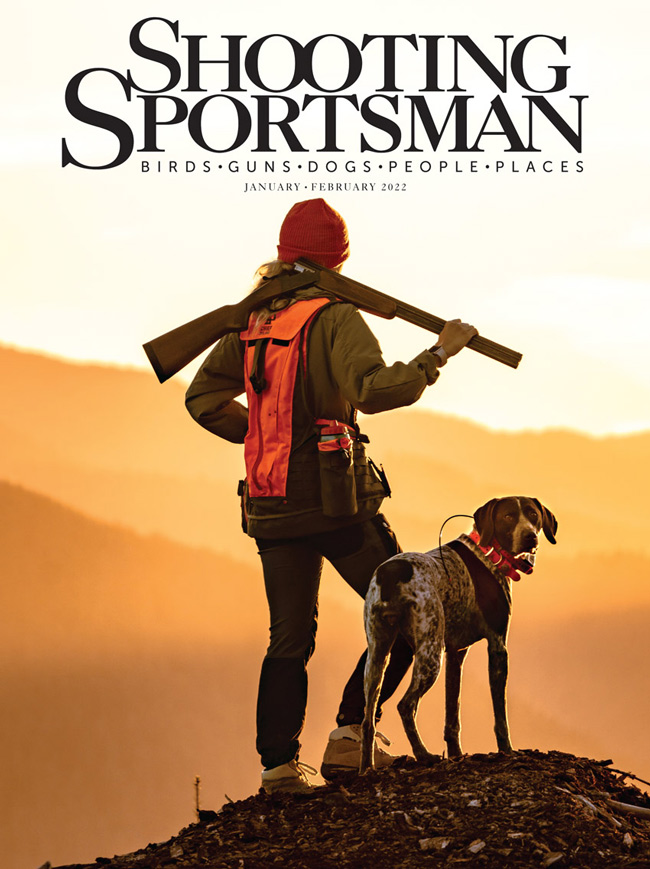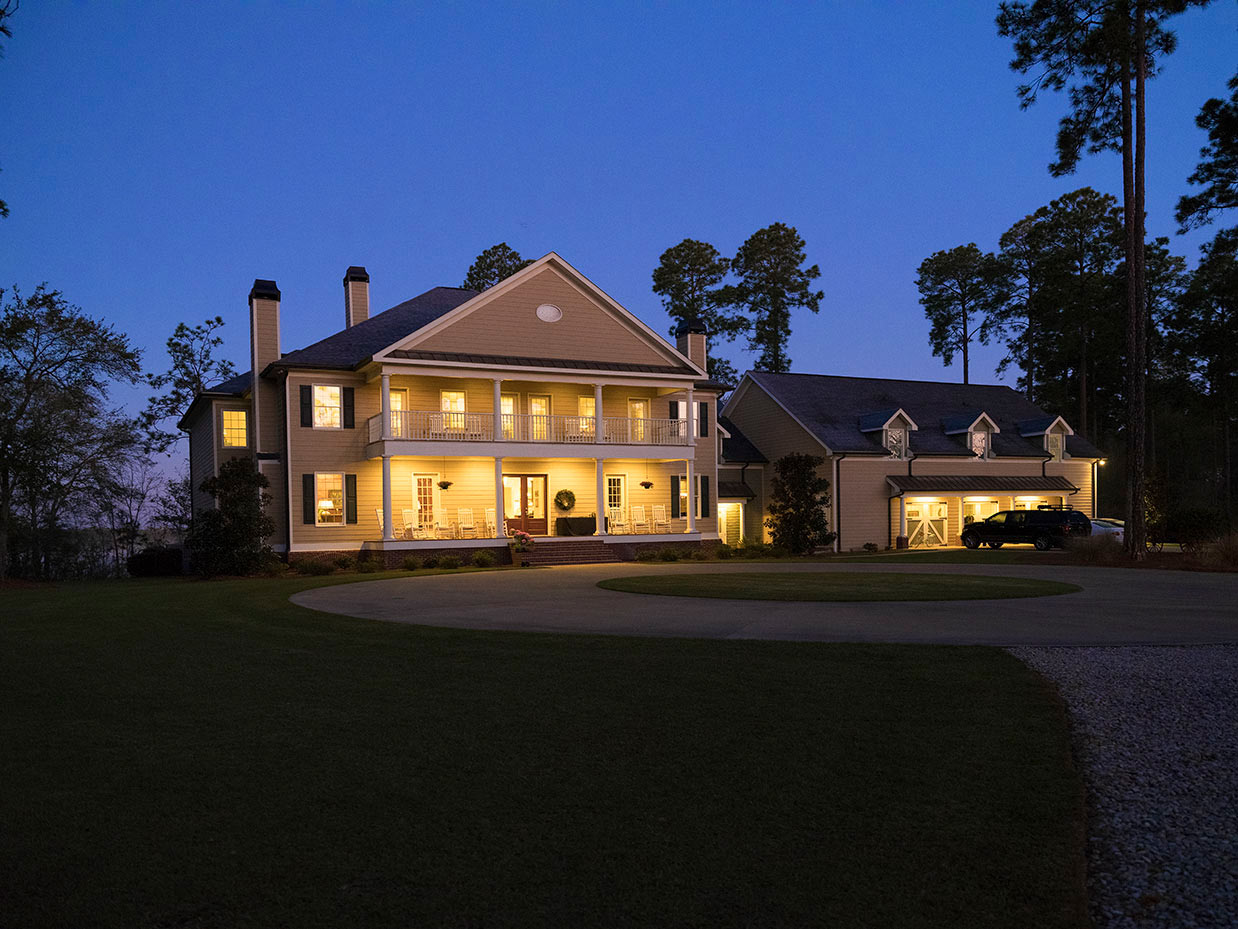If looks could kill, you would quickly limit out when shooting this Chapuis Faisan Artisan over/under 28-gauge. As the French would say, “C’est magnifique!” It is made by Chapuis, one of the noted French makers along with Darne, Verney-Carron, Manufrance and others. While those names certainly are not as common in the US as Browning, Beretta and the like, the French have been in the bird shooting business longer than anyone.
It all started in the early 1600s when Marin le Bourgeoys, from Normandy, improved the flintlock so that the lock time became quick enough to shoot flushed birds. Louis XIII got one of the guns, and others were soon in use by the French nobility. In the years that followed, bird hunting became popular among the elite throughout the Continent and England.

Located in Saint-Bonnet-le-Château, near Saint-Étienne, the gunmaking center of France, Chapuis has been in business since the early 20th Century. Today the firm has around 65 workers and produces about 80 shotguns per week along with rifles and revolvers. In 2019 Beretta acquired Chapuis, and in the US the guns are being marketed by Benelli, a subsidiary of Beretta. Orvis carries the Chapuis Classic side-by-side, which I reviewed in the July/August 2016 issue.
The Chapuis Faisan O/U, called the Super Orion in Europe, comes in two models: the Classic and the Artisan. The Classic is a laser-engraved boxlock with pretty wood. It comes in 12 gauge ($4,159), 20 gauge ($4,459) and 28 gauge ($5,359). The Artisan is the same gun but with some hand engraving and higher-quality walnut. It costs $8,759, $8,999 and $9,959 in the three gauges. Naturally, we thought that a review of the top-of-the-line 28-gauge Artisan would be appropriate.
The O/U action is nicely sized to the 28 gauge and built from a single block of forged steel. The slender action with rounded underside makes it a pleasure to carry. Lock-up is via Beretta-style twin studs halfway up the receiver face plus a passive locking lug engaging a notch in the bottom of the receiver. Hinging is on the now-almost-universal action trunnions engaging circular cutouts in each side of the monoblock.
The single trigger is mechanical and will fire the second barrel even if the first shell fails to fire. However, there is no barrel selector. The gun always fires the bottom barrel first. In certain hunting situations this could be most inconvenient. The safety is the usual fore-and-aft toggle on the top strap.
Trigger pulls on the gun were pretty good. The pull on the bottom barrel averaged a nice, crisp 3½ pounds. The pull on the top barrel was 5 pounds—a little more than might be considered an ideal difference. Ejectors were nicely timed and tossed empties six feet.
One thing I noticed about the action was that it took some effort to open. The opening lever had to be pushed hard to the right. This is probably because the gun was new, and I am guessing that it would break in.
With the mechanics out of the way, the things that really catch your attention are the silver coin finish and engraving. Every bit of metal that isn’t in the barrel is 100% covered with deep-cut foliate accents or gamebirds. That includes the action, all the forend metal plus the trigger guard, extended lower tang, top tang and opening lever. Everything.
The game scenes are a pair of partridge on the left side, a pair of pheasants on the right and a duck on the bottom. The birds are carefully hand engraved. The foliate accents throughout the rest of the gun appear to be laser engraved, but they are nicely done and held up well under my 10X jeweler's-loupe examination. In all, this engraving really makes the gun stand out. And Chapuis hasn’t forgotten the little things either. The trigger guard is rounded on the right for a right-handed shooter, and even the cap on the pistol grip is fully engraved. The sides of the monoblock and ejectors are nicely engine turned for appearance and oil retention.
Chapuis lists the stock wood as Grade 5 Circassian. The company is obviously proud of it, and it is well figured. The finish is a proper linseed—hand rubbed to a soft sheen. Wood pores were properly filled. The pistol grip has a slight palm swell on both sides. The checkering appears to be hand cut and in a high-lines-per-inch count. The grip is nicely set off by the full-length long tang and silver grip cap. The rear of the stock is a separate thin buttplate of fully checkered walnut. Wood-to-metal fit was as good as I’ve seen, with the wood just the slightest bit proud at the head of the stock and dead-on flush everywhere else.
The stock dimensions on our gun were: 151⁄16" length of pull, 1¼" drop at comb and 21⁄8" drop at heel. This is a bit longer and higher than on many other guns. Pitch was 4°, or about 2" of stand-off from the vertical. The stock has a slight amount of cast-off and a bit of toe-out. Left-handed guns are available from certain Elite Level Chapuis dealers.
The forend is of normal length, nicely rounded and svelte, as befits the small gauge. There is just enough wood to provide a good grip but not more than necessary. The front of the forend is classically rounded. The forend release is a flush-mounted, fully engraved Deeley latch in the bottom center of the forend.
The barrels on our gun were 28"—the only length offered. The low-gloss bluing was nicely done, and the solder seams were correct, with no skips or overlays. The top rib is just shy of ¼" wide, vented, flat and untapered. The top of the rib is scribed in a crosshatch pattern, to lower glare. Up front there is a single small steel bead. Side ribs are solid from the muzzle back to just where the forend starts. Then there are no side ribs back to the monoblock. This shifts a bit of weight up front, which is so desirable in a fast-handling gun like this.
Barrel chambers are 2¾" long, as is correct for a 28-gauge. Forcing cones are about 1". The bores are an untapered .551" in diameter, almost the nominal 28-gauge .550". Five flush-mounted screw chokes come with the gun. The chokes are 15⁄8" long with a taper/parallel configuration. The shot-stabilizing parallel is ½" long. The drop between the bore and the rear of the choke is .014", which is a pretty good jump for the shot to make but perhaps necessary to account for production variances. The 28-gauge barrels are not proofed for steel.
The choke constrictions are: Cylinder (.006"), Improved Cylinder (.013"), Modified (.019"), Improved Modified (.025") and Full (.031"). Briley lists the conventional constrictions for these chokes in 28 gauge as .000", .009", .015", .018" and .024", so you can see that the Chapuis constrictions are a bit snugger than usual. The chokes come in a little plastic box with a decent steel wrench that incorporates a thread-cleaning section. The chokes take 11 full turns to seat or remove.
The gun kit includes the gun in cloth sleeves packed in a very attractive Negrini takedown case that is dark green with leather borders and a red velvet interior. Included is the choke box, five chokes, the wrench, a pointless little manual, the document of proofing and a two-year warranty.
The advertised gun weight was 5 pounds 5 ounces, but our sample weighed 6 pounds 4.2 ounces. And that’s a good thing. Guns that are too light are nice to carry but can be whippy to shoot. This gun is a real shooter. It balanced with just enough heft up front to lend some steadiness without sacrificing the swing speed so necessary for flushed game.
SNAPSHOT
Make & Model: Chapuis Faisan Artisan
Gauge: 28
Action: Boxlock over/under
Chambering: 2¾"
Finish: Coin finish with 100% engraving coverage
Barrel length: 28"
Weight: 6 pounds 4.2 ounces
Chokes: 5 flush-mounted screw chokes
Stock: 151⁄16" x 1¼" x 21⁄8", 4° pitch, slight cast-off and toe-out.
Accessories: Gun case, chokes, choke box, wrench, manual, proof certificate, two-year warranty
Price as tested: $9,959
To get more important opinions than my own, I loaned the Faisan Artisan to a number of experienced shooters. Then the problems started. None of them wanted to give it back. There were no mechanical problems. There were some comments that the gun was a bit hard to open and that the automatic safety wasn’t everyone’s favorite, but as to shooting and handling, it was exceptionally pleasing.
If you think that almost $10,000 is pretty steep for something you are going to cart around in the woods and fields, you might consider the less-ornate Faisan Classic at a touch more than half the price. It has all laser engraving and a slightly lower grade of wood, but everything else is mechanically the same—which is a good thing.
But if you want a real stunner and a shooting delight, do consider the Chapuis Faisan Artisan. This little French beauty is not only good looking, but she can cook.
For more information, contact Chapuis Armes.
Bruce Buck’s most recent book, Shotguns on Review, is available for $30 from rowman.com.





